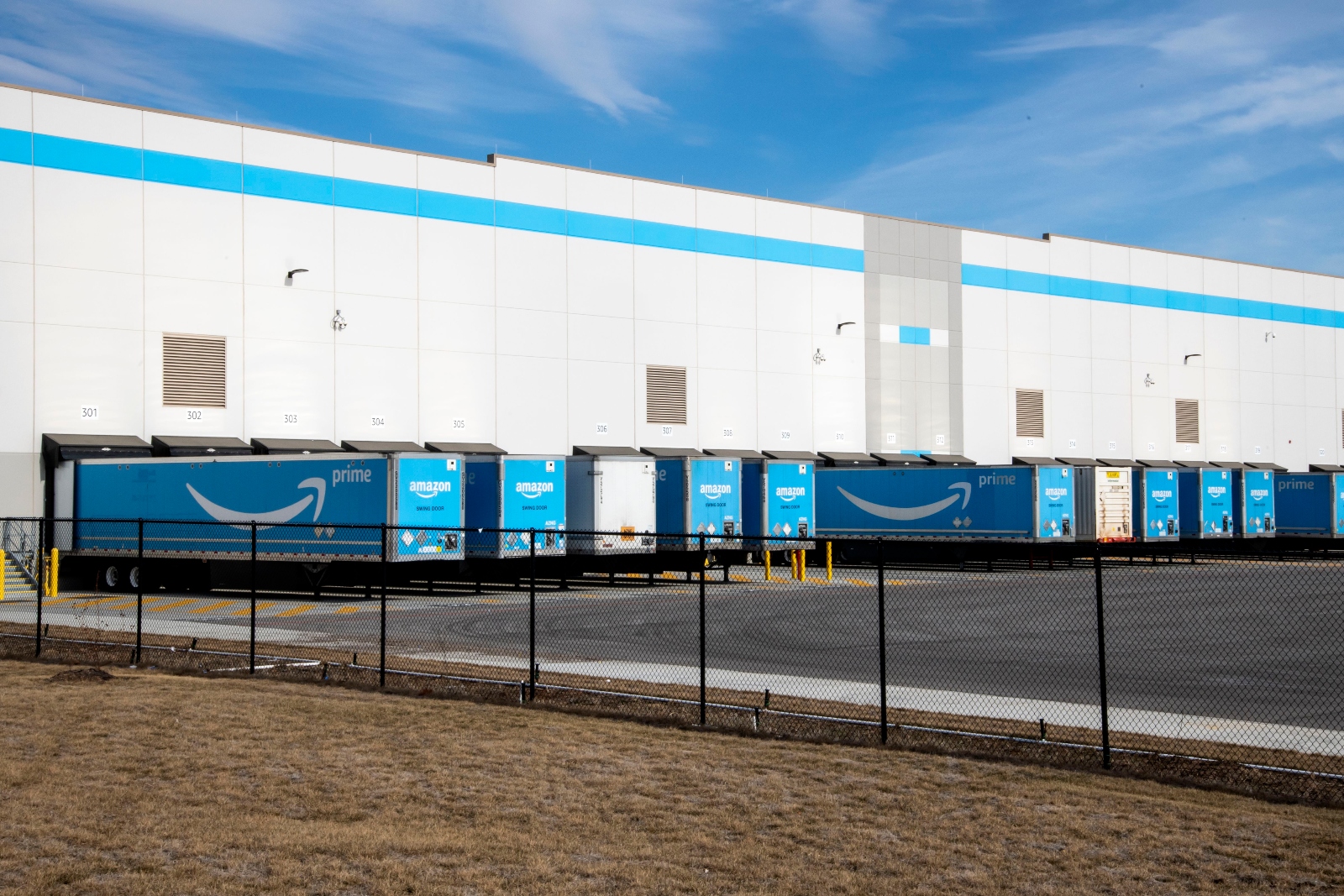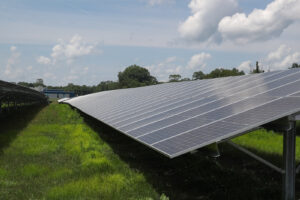
In recent decades, the way Americans buy things has undergone a radical transformation. E-commerce firms like Amazon have reshaped how people shop and how they receive their purchases, dotting the country with gigantic warehouses for the distribution of merchandise and bringing large volumes of truck traffic to nearby communities.
In a paper Published Wednesday, researchers at George Washington University used satellite data to measure the air pollution associated with large warehouses — the first such nationwide study.
The researchers focused in part on nitrogen dioxide, or NO2, a traffic-related air pollutant regulated under the Clean Air Act and linked to asthma and other respiratory diseases. The NASA-funded study cross-referenced the locations of 150,000 warehouses across the US with satellite observations of NO2 and found that people who live near warehouses are exposed to an average of 20 percent more NO2 than those who don’t. It also found that warehouses are disproportionately located in Black, Hispanic and Asian neighborhoods — and that the concentration of racial minorities is closely related to the number of warehouses in a given area. More than 250 percent more Hispanic and Asian residents live near the largest warehouse clusters than the national average.
The highest concentrations of NO2 pollution are one or two miles downwind of the warehouses, said Gaige Kerr, the study’s lead author. This reflects the fact that NO2 is not emitted directly by vehicles. Instead, Kerr said, “Tailpipes give off NO, nitrogen oxide, and then NO undergoes chemical reactions in the atmosphere. Those reactions take some time, so the result is, you can imagine, there’s this plume of NO -rich air at the warehouse and it is blown by the prevailing winds.”
Warehousing is as old as shipping, but Kerr said the growth of online retail has changed an industry that has looked the same for decades. “If you look at a piece of warehouse properties over time, the average new warehouse built from about 1980 to 2010 is all kind of the same,” Kerr said.
But then everything changed. “After 2010, there is a very dramatic increase in the average square footage of warehouses,” Kerr said. “There is about a 400 percent increase in the number of loading spaces at the average warehouse, and also increases in the number of parking spaces as well as the density of warehouse clusters.”
With the growth of these facilities came organized community opposition in some of the nation’s largest warehouse centers. In California’s South Coast, home to the largest concentration of warehouses in the country, local regulators passed a landmark pollution rule in 2021, requiring warehouses to offset pollution from their trucks by choosing from a range of actions, including adding electric vehicle chargers or solar panels, or pay a mitigation fee to finance clean energy investments in the affected communities.
This rule was novel in its recognition of warehouses as an “indirect source” of pollution: Even though the buildings themselves did not emit pollutants, their owners were now on the hook for the pollution from the traffic they brought. Other states have started consider implementing versions of this rule.
Kerr said there are policy solutions available at a variety of jurisdictional levels to reduce the health impacts of warehouse pollution. In addition to issuing emission limits, the federal government can further incentivize the electrification of trucks. But other players can also do their part: “Individual corporations can undertake to phase out some of their older diesel vehicles, which are the worst when it comes to pollution. And there may also be obligations from electric utilities to deploy charging infrastructure, particularly near clusters of warehouses and in very heavy truck corridors,” Kerr said.
Americans can also buy fewer things.







